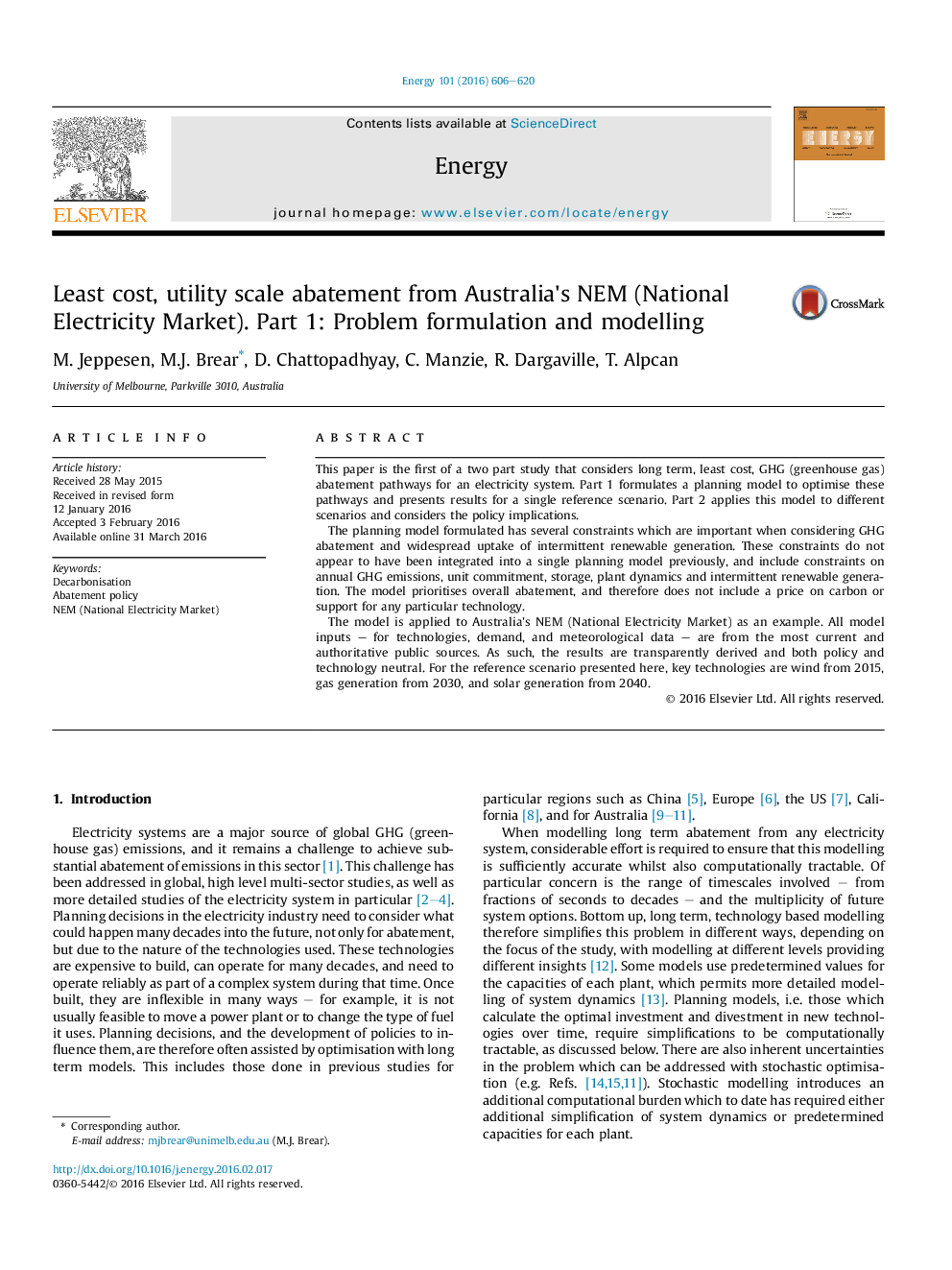| کد مقاله | کد نشریه | سال انتشار | مقاله انگلیسی | نسخه تمام متن |
|---|---|---|---|---|
| 1731059 | 1521447 | 2016 | 15 صفحه PDF | دانلود رایگان |

• An electricity system planning model for least-cost long term abatement is presented.
• The model has inter-temporal constraints (linearised commitment and utility storage).
• The model is applied to Australia's NEM (National Electricity Market) as a case study.
• Key technologies: wind from 2015, CCGT from 2030, and solar (PV & thermal) from 2040.
This paper is the first of a two part study that considers long term, least cost, GHG (greenhouse gas) abatement pathways for an electricity system. Part 1 formulates a planning model to optimise these pathways and presents results for a single reference scenario. Part 2 applies this model to different scenarios and considers the policy implications.The planning model formulated has several constraints which are important when considering GHG abatement and widespread uptake of intermittent renewable generation. These constraints do not appear to have been integrated into a single planning model previously, and include constraints on annual GHG emissions, unit commitment, storage, plant dynamics and intermittent renewable generation. The model prioritises overall abatement, and therefore does not include a price on carbon or support for any particular technology.The model is applied to Australia's NEM (National Electricity Market) as an example. All model inputs – for technologies, demand, and meteorological data – are from the most current and authoritative public sources. As such, the results are transparently derived and both policy and technology neutral. For the reference scenario presented here, key technologies are wind from 2015, gas generation from 2030, and solar generation from 2040.
Journal: Energy - Volume 101, 15 April 2016, Pages 606–620